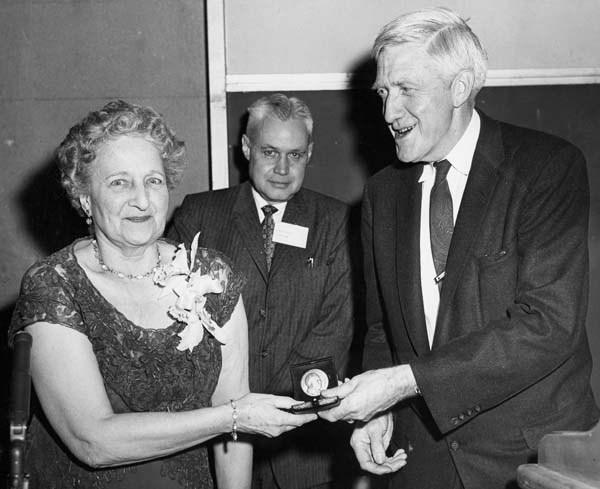Gertrude Rand

Gertrude Rand was known for her work on color perception. She received her undergraduate degree from Cornell University, USA, in 1908 and her MA and PhD from Bryn Mawr College, USA, in 1911. Rand studied psychology, specifically the sensitivity of the retina to color. She remained at Bryn Mawr for more than ten years and was a respected professor and researcher. She co-published many articles on the effects of lighting on color vision with her husband, Clarence E. Ferree. Rand’s research involved mapping the retina for its perceptual abilities, including light sensitivity and color discrimination. The map of the retina became known as the Ferree-Rand perimeter, and it enabled the diagnosis of visual dysfunctions.
In 1928, she moved to Baltimore, Maryland, USA, to work for the Wilmer Ophthalmological Institute of Johns Hopkins School of Medicine, where she and Ferree developed a vision research laboratory. She was first appointed as an associate process of research ophthalmology and later became an associate professor of physiological optics. Many of her projects at Johns Hopkins involved industrial lighting. Some of her most notable work was on designing glare-free illumination for the Holland Tunnel, which runs under the Hudson River to connect New York and New Jersey. She also contributed to World War II efforts by developing vision standards and testing for pilots and ship lookouts, including night vision technology.
In 1943, Rand moved to New York, USA, to become a research associate at Columbia University’s Knapp Foundation of the College of Physicians and Surgeons. She remained there until her retirement in 1957. She and her collaborators researched the detection and assessment of color blindness and developed the HRR pseudo-isochromatic color test, which was published in JOSA in 1954, and is still used in ophthalmology today. This work enabled the qualitative identification of color blindness along with the type and degree of color blindness in different subjects.
Rand became the first woman to become a Fellow of the Illuminating Society of North America in 1952 and was awarded the society’s gold medal for her work in 1963. In 1959, she was the first woman to receive OSA’s Edgar D. Tillyer Medal in recognition of her accomplishments and scientific standing in the field of visual physiology. That same year, she was elected to the first class of OSA Fellows.
Rand died in 1970 at the age of 83.
Document Created: 26 Jul 2023
Last Updated: 7 Mar 2024
